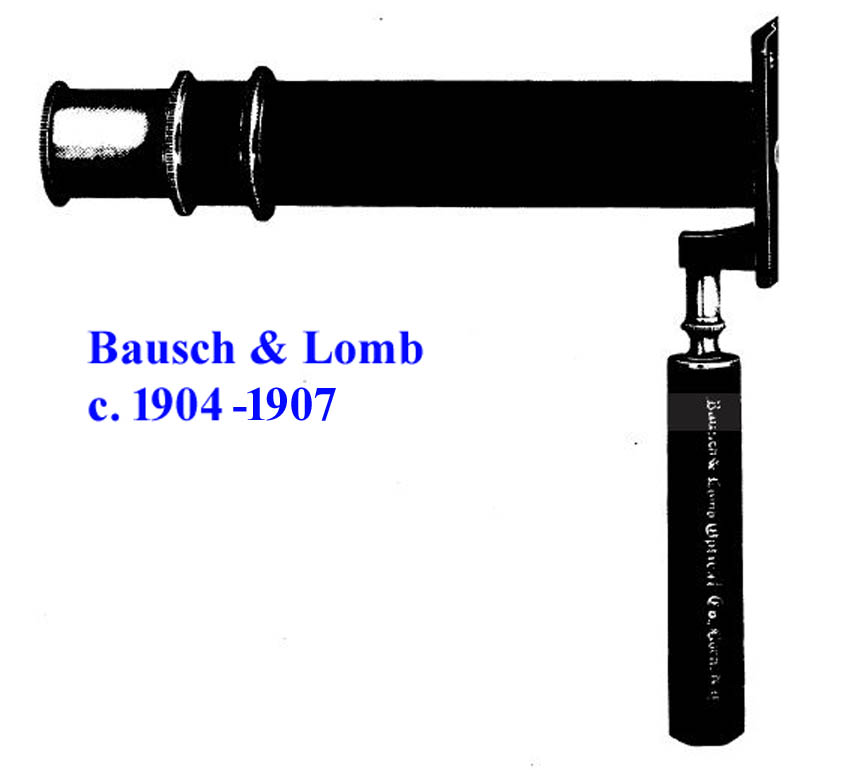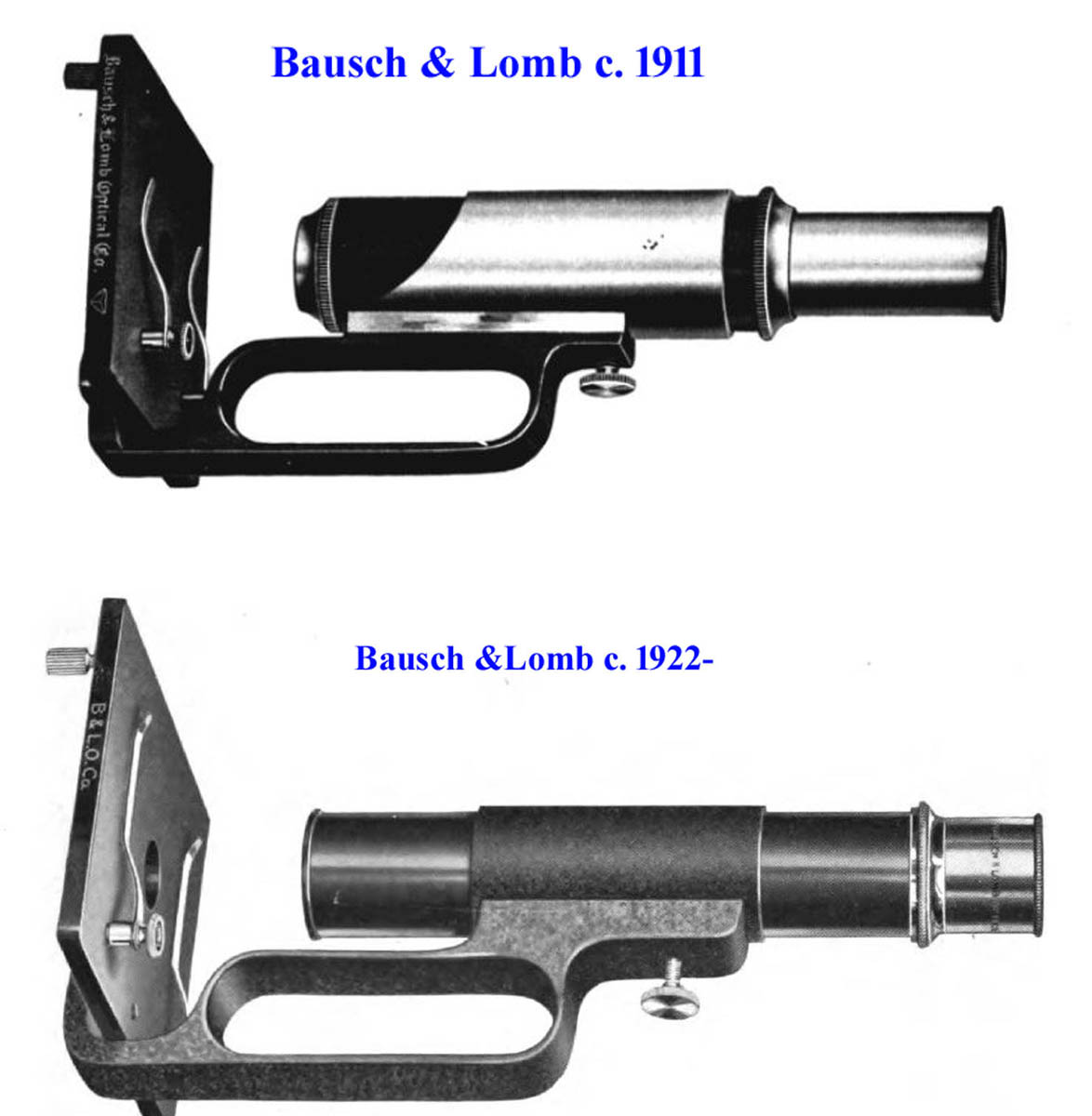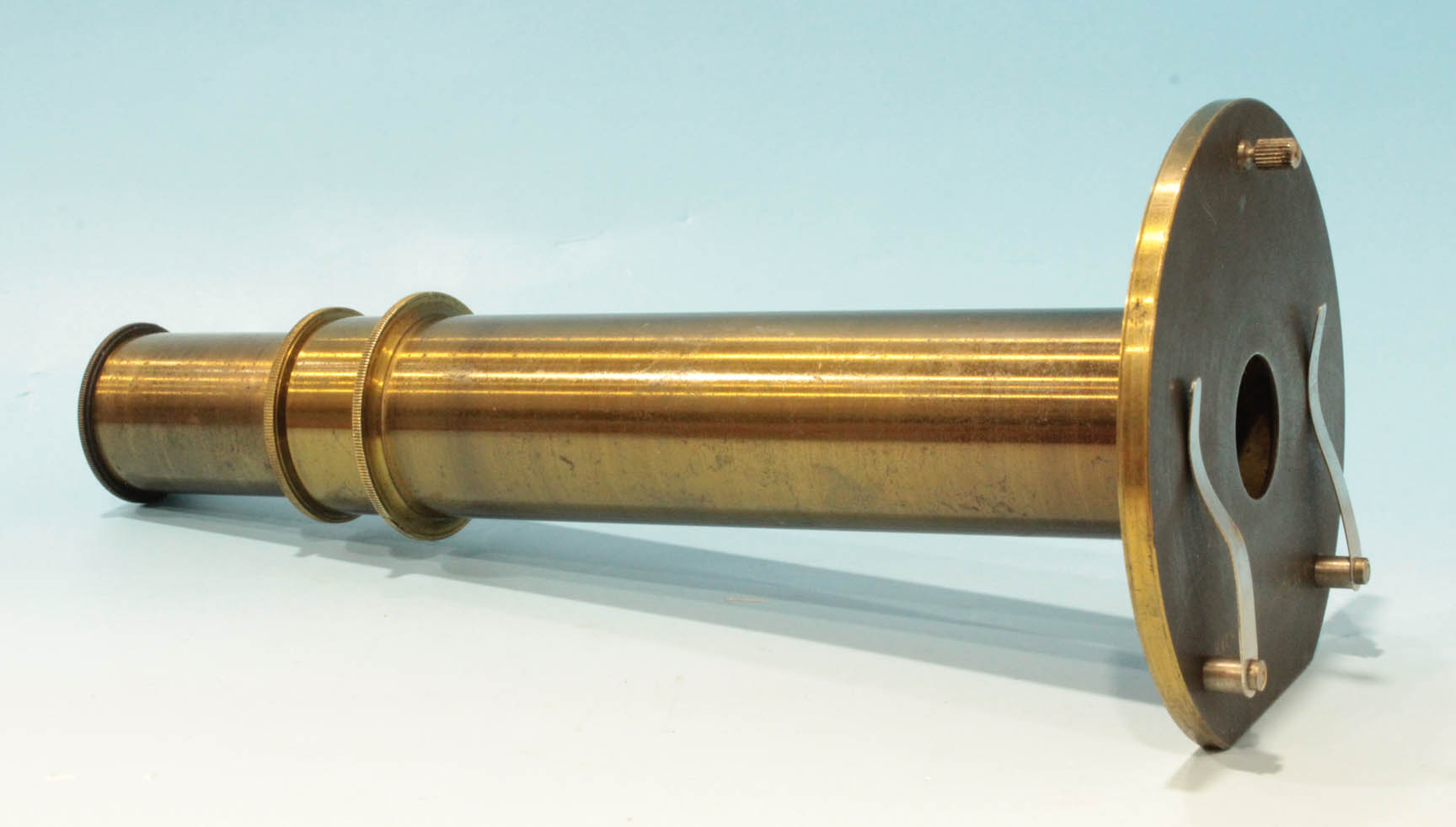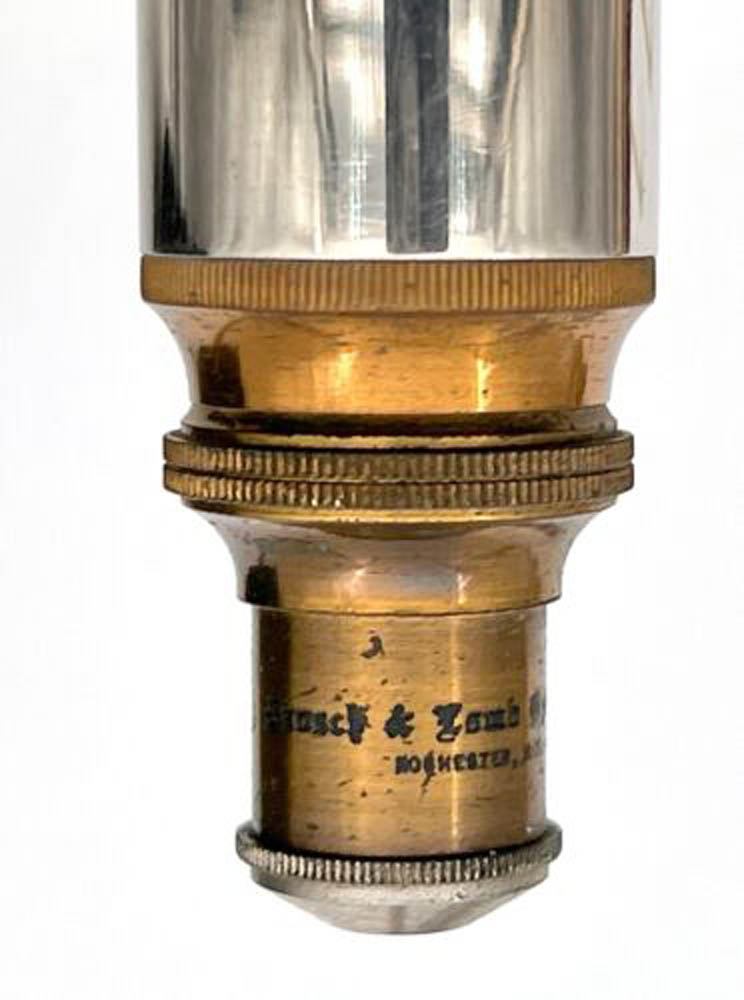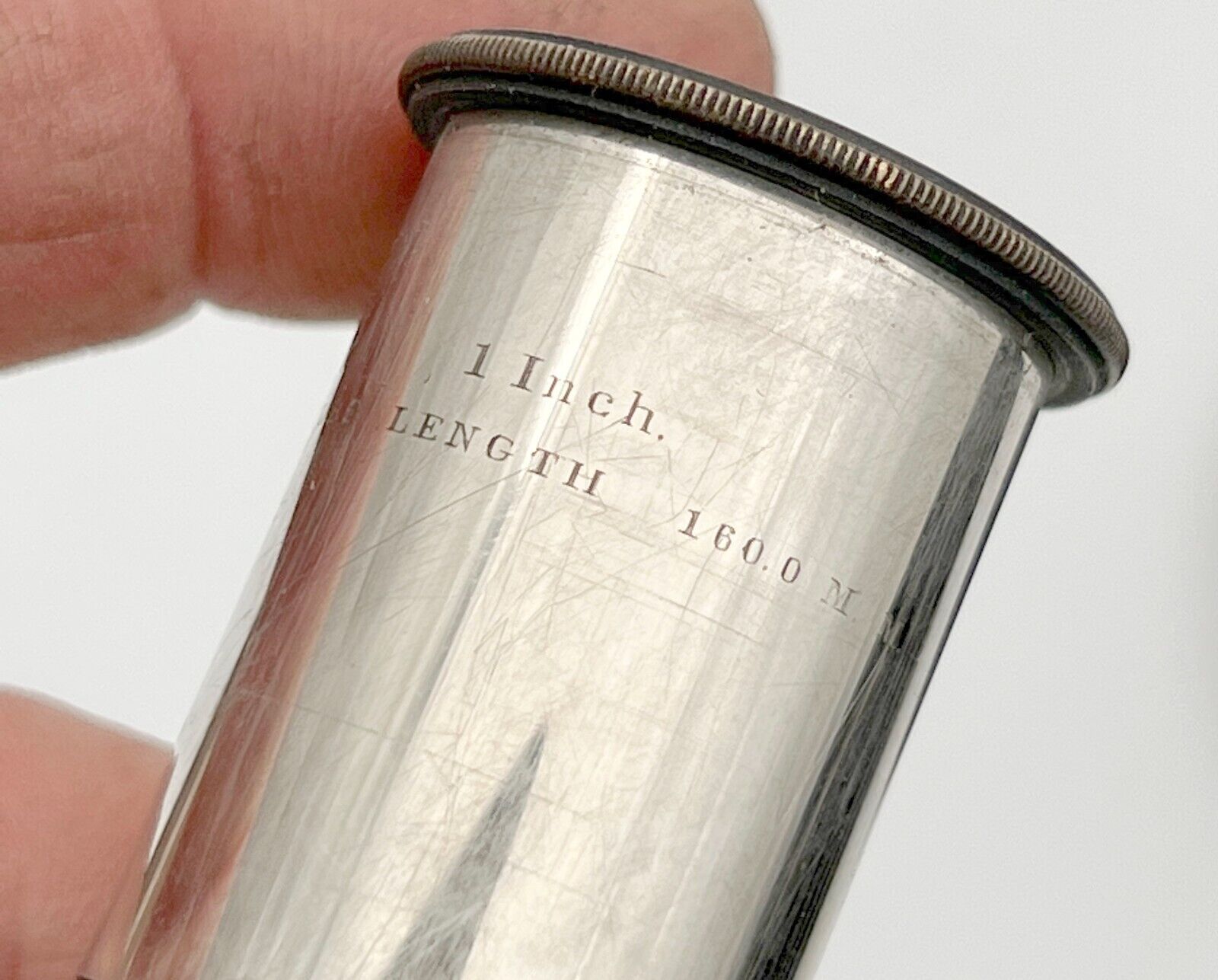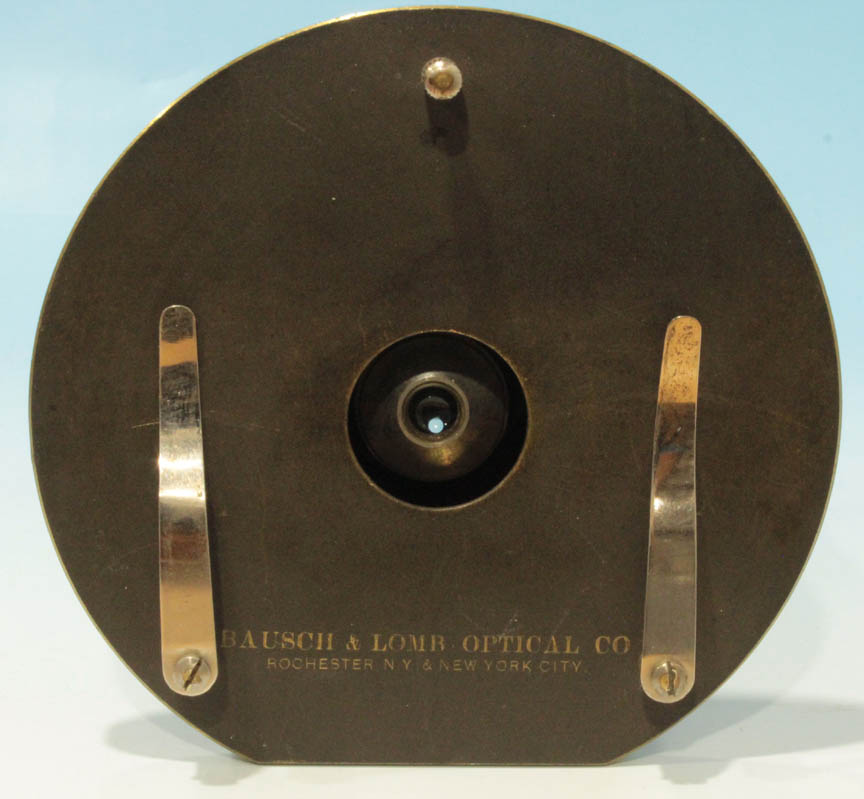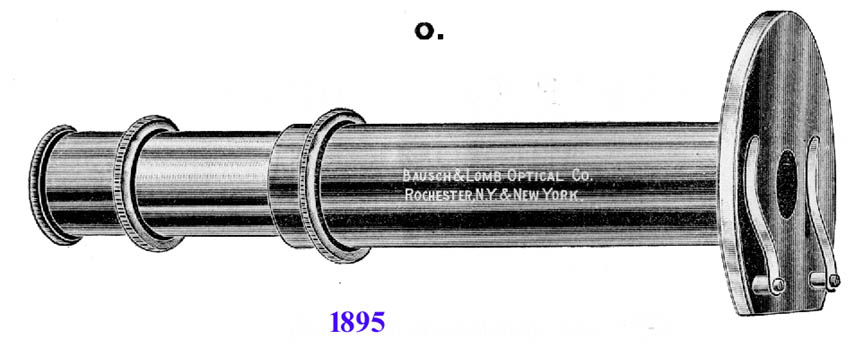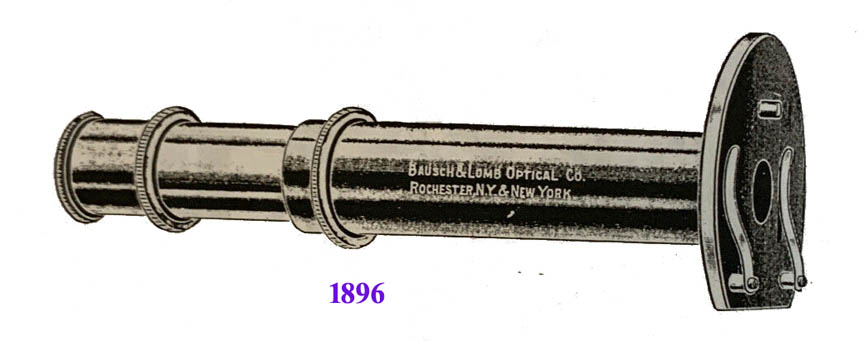DEMONSTRATION MICROSCOPE
MODEL: O
MAKER: BAUSCH & LOMB
c. 1896
DESCRIPTION:
Signed on the bottom of the stage: BAUSCH & LOMB OPTICAL. CO., ROCHESTER NY & NEW YORK CITY
, this 127 year old demonstration microscope lacks a substage. The eyepiece is labeled BAUSCH & LOMB OPTICAL CO. 1 Inch, TUBE LENGTH 160 M.M.
and the objective is signed: Bausch & Lomb Optical Co. ½ N.A. 0.24, TUBE LENGTH 160 M.M.
. The optical tube is focused by pushing or pulling. In use the microscope slide is attached to the bottom of the stage where the central opening is lare enought to allow the slide to be placed with the specimen side towards the objective, even if in a raised cell. There is no provision for keeping the slide in one position however, the only provision for holding the slide being two stage clips. One way that the position of a slide could be secured would be with tape. The stage is round with one flattened area, preventing it from rolling on a table. It can also stand upright supported by a tripod formed by the screws for the 2 stage clips and a small knurled rod which forms the third toe. There is no provision to lock the focus, though most slides are in focus with the draw tube pushed nearly all the way in.
HISTORY OF B & L DEMONSTRATION OR SCHOOL OR SALON MICROSCOPES:
Bausch & Lomb apparently started to manufacture demonstration microscopes in the 1890's and these evolved over the years. The first model of c. 1894 was the same as the model shown at the top of this page except for the additional little rod allowing it to stand upright as a tripod. By 1896 that feature was added.
The 1900 model had 2 improvements; the stage had a mortise in the center to accomodate the coverslip or cell in the center of the slide, and it had spiral groove focusing.
The mortise was added so that if a slide was slipped onto the stage with the coverslip towards the stage, no damage to the coverslip would occur. Because of the mortise in the center, two little rods were added so that it was supported by 4 points when upright.
By 1904 a straight handle was added
By 1911 it looked more like a microscope with a 'jug handle'.
Variations of the jug handle continued through at least 1922. The only drawback still present in the 1922 model, was that the slide was held in place by stage clips and so as it was passed from student to student, the slide was likely to move unless taped in place.
